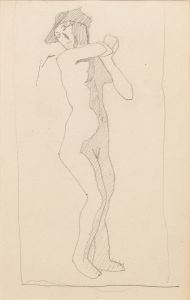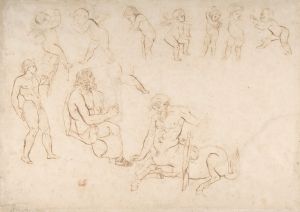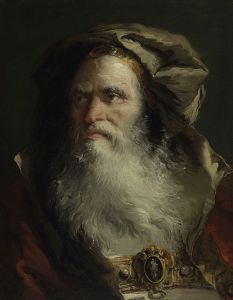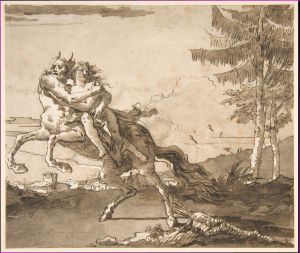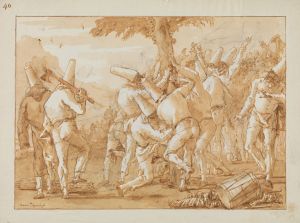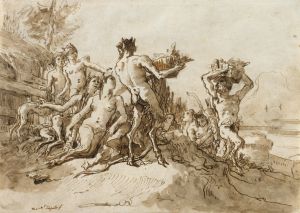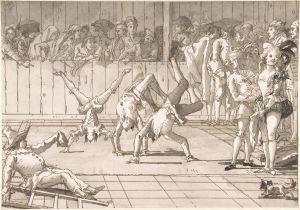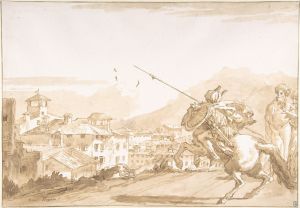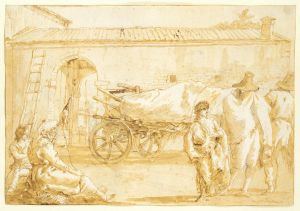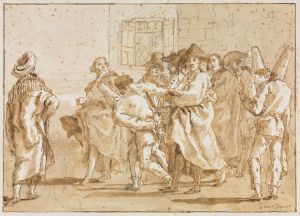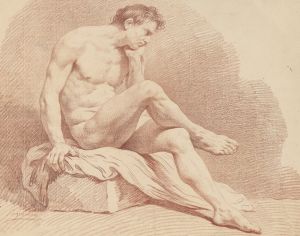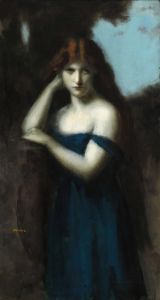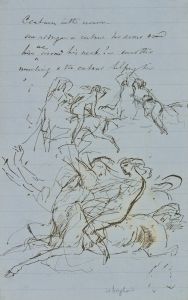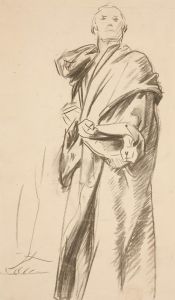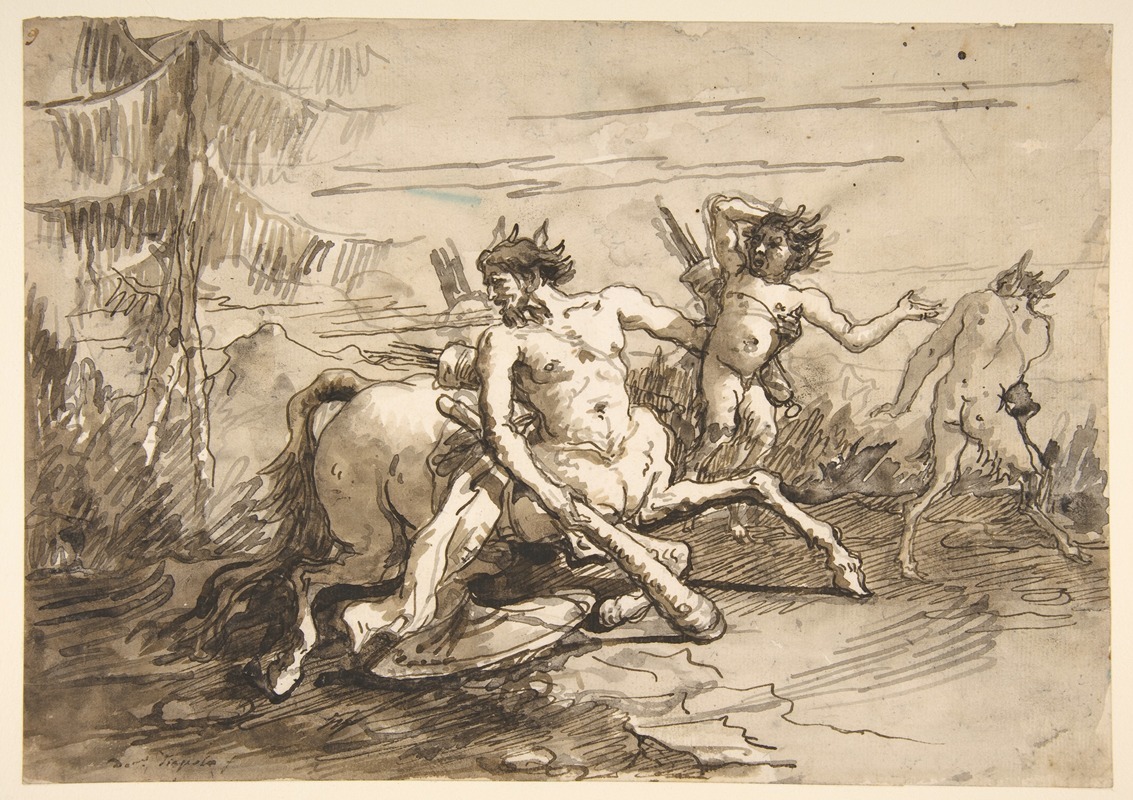
Centaur with a Club, and Two Satyrs
A hand-painted replica of Giovanni Domenico Tiepolo’s masterpiece Centaur with a Club, and Two Satyrs, meticulously crafted by professional artists to capture the true essence of the original. Each piece is created with museum-quality canvas and rare mineral pigments, carefully painted by experienced artists with delicate brushstrokes and rich, layered colors to perfectly recreate the texture of the original artwork. Unlike machine-printed reproductions, this hand-painted version brings the painting to life, infused with the artist’s emotions and skill in every stroke. Whether for personal collection or home decoration, it instantly elevates the artistic atmosphere of any space.
"Centaur with a Club, and Two Satyrs" is a captivating artwork by the Italian artist Giovanni Domenico Tiepolo, who was an influential figure in the 18th-century Venetian art scene. Born in 1727, Domenico was the son of the renowned painter Giovanni Battista Tiepolo, and he followed in his father's footsteps, developing a distinctive style that combined elements of the Rococo and Neoclassical movements. Domenico's work is celebrated for its dynamic compositions, vibrant colors, and imaginative themes, often drawing on mythological and allegorical subjects.
The painting "Centaur with a Club, and Two Satyrs" exemplifies Domenico Tiepolo's fascination with classical mythology and his ability to bring these ancient tales to life with a sense of drama and humor. The artwork depicts a centaur, a mythological creature that is half-human and half-horse, wielding a club. Accompanying the centaur are two satyrs, creatures from Greek mythology known for their mischievous and playful nature, often associated with Dionysian revelry.
Domenico Tiepolo's depiction of these mythological figures is characterized by a lively and animated style. The centaur, with its muscular form and dynamic pose, conveys a sense of strength and movement. The satyrs, with their expressive faces and playful gestures, add a layer of whimsy and vitality to the composition. Tiepolo's use of light and shadow enhances the three-dimensionality of the figures, creating a sense of depth and realism that draws the viewer into the scene.
The painting reflects the broader cultural and artistic trends of the 18th century, a period marked by a renewed interest in classical antiquity. This era saw a revival of classical themes and motifs in art, as artists sought to capture the elegance and harmony of ancient Greek and Roman art. Domenico Tiepolo, like many of his contemporaries, was influenced by this classical revival, and his work often incorporates elements of classical mythology and iconography.
Domenico Tiepolo's artistic career was marked by a prolific output of paintings, drawings, and prints. He was particularly known for his series of drawings and etchings that explored various mythological and religious themes. His work was highly regarded during his lifetime, and he received numerous commissions from patrons across Europe. Despite being overshadowed by his father's fame, Domenico established his own reputation as a talented and innovative artist.
"Centaur with a Club, and Two Satyrs" is a testament to Domenico Tiepolo's skill as a painter and his ability to infuse classical subjects with a sense of vitality and humor. The painting not only showcases his technical prowess but also reflects his deep engagement with the cultural and artistic currents of his time. Today, Tiepolo's work continues to be celebrated for its imaginative compositions and its contribution to the rich tapestry of 18th-century European art.





